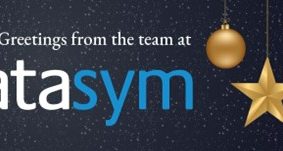Datasym has updated Menumark SQL to assist with the change in allergen legislation due to come into force in December 2014.
To meet the new legislation caterers must be able to evidence the exact ingredients used, such as by brand names, and pack sizes, or other information that details what is normally used or that of any replacement. The EU Food Information to Consumers regulation requires packaged food to have allergenic ingredients information emphasised in the ingredients list and food sold loose to have allergen ingredients information available. ‘Allergens’ refers to the 14 listed in the legislation namely:
Cereals containing gluten, Wheat, Oats, Rye, Barley, Spelt, Khorasan wheat / Kamut, Crustaceans (eg. prawns, crabs, lobster), Eggs, Fish, Peanuts, Soya, Milk (including lactose), Nuts, Almonds, Hazelnuts, Walnuts, Cashews, Pecan, Brazil nuts, Pistachio, Macadamia, Celery, Mustard, Sesame seeds, Sulphur dioxide (where added at >10mg/kg or 10ml/L in the finished product), Lupin, Molluscs (eg. clams, squid, oysters, scallops).
Datasym’s Menumark SQL application already has a facility to insert allergens against all recipes. The new changes implemented by Datasym will be to link the allergens set against an individual commodity to all the recipes that commodity appears within as an ingredient. This will reduce the work for the database administrator and ensure that when a commodity is entered into Menumark, this one commodity will update the allergen information of all of the recipes that it is an ingredient within. In addition, Datasym will be providing a report that will list the yield of a recipe, ingredient list including amounts required and allergens per recipe card.
A program update containing the new routines described above will be made available to all support contract holders in early December.








